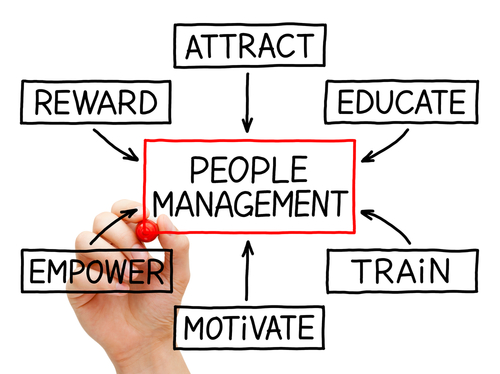Since transitioning to largely remote work arrangements in March 2020, leaders have witnessed the extraordinary resilience and versatility of their colleagues and teams on a global scale. Teams have continued to serve clients at a high standard and complete tasks while problem-solving for challenges that nobody expected to encounter.
As more workplaces announce their plans for 2022—many plan to continue their remote work arrangements temporarily or indefinitely—leaders and their HR teams are still determining how these decisions will impact employees and their business over the long term. Despite the triumphs of 2020 and 2021, managing people remotely is not an easy feat.
Approaches will vary by organization depending on factors such as industry norms, job roles, culture, geography, and leadership styles. When thinking about in-person vs. remote work, it’s important to consider the “four Cs” and how they manifest in a particular organization:
Collaboration
The past year has proven that people can effectively collaborate in a remote environment, but it doesn’t come without its challenges. Remember that the circumstances during the recent health crisis pushed everyone to new territory and even to their limits. As workplaces prepare for longer-term remote work, it is important that companies reset their expectations for remote collaboration and understand that success may look different than it did in 2020 and 2021.
HR teams should listen closely to employee feedback and conduct frequent sentiment surveys to understand the balance employees need in their work environment. Some will be happy working remotely, others may remain happy if certain benefits are provided, and still others may be looking for more of the connection that can be felt through in-person collaboration. Leaders cannot make changes in the workplace to help employees be their best without first understanding how employees feel about their current collaborative environment.
Connection
For some employees, connection may be hard to feel in a remote work environment. The associated feelings of community and inclusion are experiential in nature, so it is up to HR to ensure employees’ remote work setup includes opportunities to experience connection beyond their daily work responsibilities.
Establish a strong connection from the first step of a new employee’s journey, even when starting remotely. Ensure your onboarding process is thoughtfully planned and executed, with the goal of helping new employees feel camaraderie with their colleagues right away. Consider ways you can incorporate part of your company’s unique in-person culture into the remote onboarding experience, such as sending welcome packages stuffed with your company’s favorite snacks or welcoming employees to participate virtually in company traditions.
Career Development
Opportunities for career development vary greatly between organizations. No matter an organization’s size or industry, HR managers must recognize that their developmental role encompasses much more than just employee training while in a remote work setting.
Technology offers numerous opportunities for education and networking for employees, and remote settings make these benefits relatively easy to facilitate. Ensure staffers are aware of all the digital resources at their fingertips, and create an environment that encourages development and exploration.
The greatest challenge is for large, global organizations with teams that may never gather in person, even under normal circumstances. Incorporating tools to navigate the organization virtually, such as internal networking platforms and specialized interest or resource groups, will help employees build the social capital to get work done.
Client Needs
As your workplace adjusts to its remote future, whether the plan is to return to the office, stay fully remote, or implement a hybrid system, how your organization handles client needs will have a major impact on employees. In the past year, we have seen some organizations transition to managing clients remotely with ease, while others have remained most effective in person.
Audit your clients to understand how to balance client needs with the needs of your employees. Some clients may be happy to reduce their in-person touch points, allowing your team to focus any in-person time on clients that really need the support of a physical meeting. This will help employees take better care of their own energy, priorities, and time while being the best representatives for your business and brand.
Michelle Hay is global chief people officer at Sedgwick, a global provider of technology-enabled risk, benefits, and integrated business solutions.

